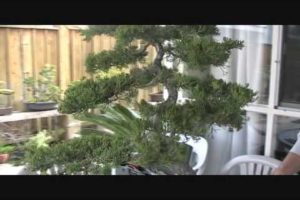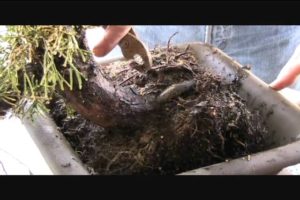Rooting Japanese Maple Cuttings
Bonsai Propagation
Bonsai is a fascinating art form that involves growing and shaping miniature trees to create a beautiful and harmonious living work of art. Bonsai propagation is an important aspect of bonsai as it allows enthusiasts to create new trees and expand their collections. Whether you are an experienced bonsai grower or a beginner, this article will guide you through the art and science of bonsai propagation.
Why Propagate Bonsai Trees?
Propagating bonsai trees has several benefits. Firstly, it allows bonsai enthusiasts to increase their collections without having to purchase new trees. This is especially important for rare or hard-to-find species, as it allows them to maintain their collection and keep it diverse.
Another reason to propagate bonsai trees is to create identical copies of a favorite bonsai. This is especially useful if a tree has a unique or desirable trait, such as a unique shape or a particularly vibrant color. Propagating the tree will ensure these traits are passed down to the new tree.
Finally, propagating bonsai trees can help to preserve endangered species. Growing these species in a bonsai setting protects them from the elements. They can be propagated to ensure their survival.

Methods of Bonsai Propagation
There are several methods of bonsai propagation, each with its own advantages and disadvantages. The following are some of the most popular methods used by bonsai enthusiasts.
Seed Propagation
Seed propagation is the most natural method of bonsai propagation. It involves collecting seeds from a bonsai tree and growing them into new trees. This method is best for species that are easy to grow from seed, such as pines and ficus. To propagate bonsai trees using seeds, plant the seeds in a pot filled with soil and water regularly. Once the seedlings have sprouted, they can be shaped into bonsai trees.
Cuttings Propagation
Cuttings propagation involves taking cuttings from a bonsai tree and rooting them to create new trees. This method is best for easily rooted species, such as junipers and elms. To propagate bonsai trees using cuttings, cut a healthy stem from the parent tree and place it in water or rooting hormone to encourage root growth. Once the roots have developed, the cutting can be potted and shaped into a bonsai tree.
Grafting Propagation
Grafting propagation involves attaching a stem from one tree to the root system of another tree. This method is best for species that are difficult to root, such as azaleas and maples. To propagate bonsai trees using grafting, cut a stem from the parent tree and attach it to a rootstock. Once the graft has taken, the new tree can be shaped into a bonsai.
Layering Propagation
Layering propagation involves bending a stem from a bonsai tree to the ground and covering it with soil to encourage rooting. This method is best for easily rooted species, such as pines and junipers. To propagate bonsai trees using layering, bend a stem from the parent tree to the ground and cover it with soil. Once the roots have developed, the new tree can be separated from the parent tree and potted as a new tree.
Tips for Successful Propagation
To ensure successful bonsai propagation, it is essential to follow a few key tips :
Choose the correct method: As mentioned above, different species of bonsai trees are best propagated using different methods. Make sure to research the species you want to propagate and choose the method that is best suited for it.
Use healthy parent trees: The health of the parent tree is critical for successful bonsai propagation. Ensure the parent tree is healthy and free of pests and diseases before propagating it.
Use quality soil and potting mix: The soil and potting mix you use for bonsai propagation should be of good quality to ensure that the new tree is able to establish itself properly. Make sure the soil is well-draining and rich in nutrients.
Provide adequate light and water: Adequate light and water are essential for successful bonsai propagation. Make sure the new trees receive enough light to promote healthy growth. Water them regularly to keep the soil moist but not waterlogged.
Keep an eye on pests and diseases: Bonsai propagation is a delicate process. It is crucial to keep an eye out for pests and diseases that can harm the new trees. Regularly inspect the new trees for any signs of pests or diseases and take action to address them promptly.
Conclusion
Bonsai propagation is a fascinating and rewarding aspect of bonsai growing. Whether you are looking to increase your collection, preserve endangered species, or create identical copies of your favorite bonsai trees, there is a method of propagation that is right for you. With a bit of patience, care, and attention to detail, you can successfully propagate bonsai trees and create new works of art.
In conclusion, bonsai propagation is an important aspect of bonsai growing. Following the tips outlined above can ensure that your new trees are healthy, vibrant, and beautiful. Whether you are a seasoned bonsai grower or a beginner, bonsai propagation is an exciting and rewarding hobby that is well worth exploring.







Leave a Reply
Your email is safe with us.
You must be logged in to post a comment.